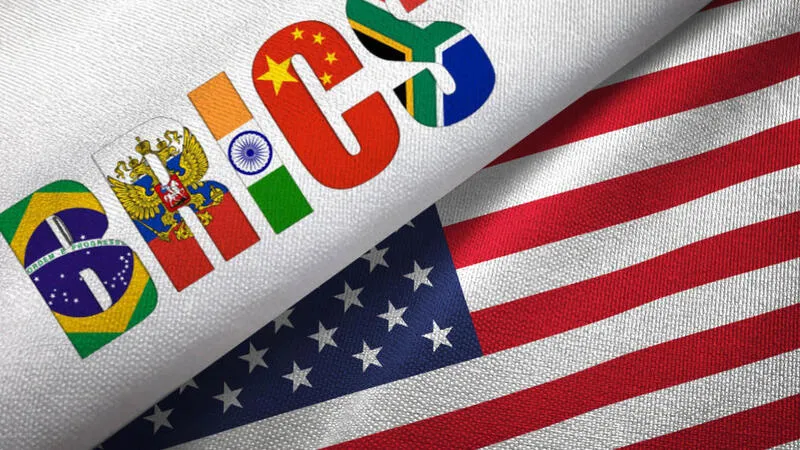The USA no longer seems to be the de facto global capital for investments as BRICS is grabbing a bigger pie of the financial share. Global investors are being defensive on the US dollar’s prospects as the DXY index fell to the 96 range early Thursday. Exposure to the US dollar-based assets has been its lowest since 2005, a recent report from the Bank of America read.
BRICS members such as China, India, Brazil, and South Africa are receiving foreign funds from institutional clients, which were the de facto investments in the USA. The goalpost is being moved to the global south where developing countries are reaping the benefits of a weaker dollar. The focus on the Southeast region came after Trump imposed sweeping tariffs on trade this year.
Also Read: BRICS Inspires 15 Countries To Use Homegrown Payment System
USA Remains Market King But BRICS Aims To Dim the Power

The dollar is still the most potent currency but its power is gradually declining among the global investor’s community. Rarely have institutional clients gone all-in on other countries’ assets but that changed in 2025. The markets of BRICS members are growing leaving room for institutional funds to reap the growth. An early investment could generate more returns than US-based assets like Treasuries and bonds.
If gaining global capital was not enough, BRICS members China and India are using the opportunity to internationalize their local currency, the Chinese yuan, and the rupee to take on the USA’s greenback. China has also received an inflow of foreign funds of nearly $17 billion as the power of the dollar wanes.
Also Read: India Reveals New Details About BRICS Currency
The USA was once a promising destination for financial investments and BRICS is eating into it. The next few decades could make the dollar more weaker and many countries will join the de-dollarization bandwagon. The White House needs to put things in check to stay ahead of the global financial curve.






